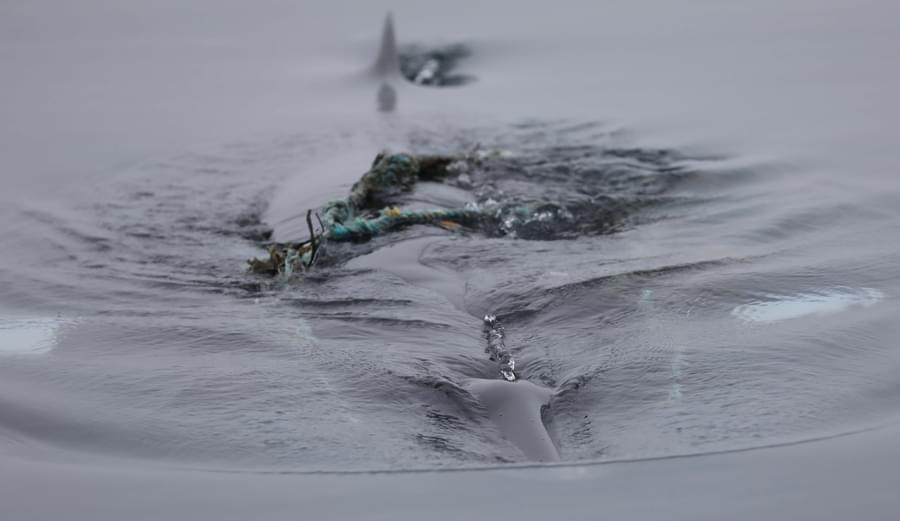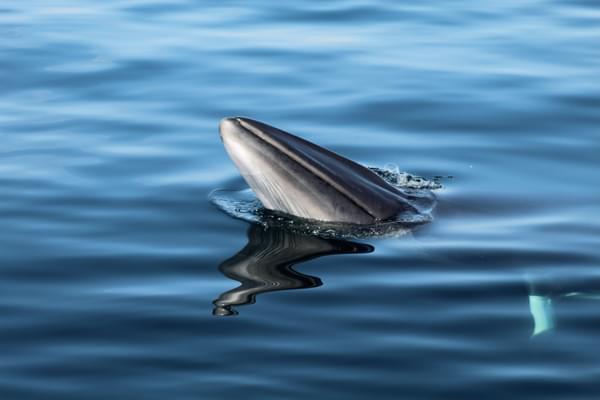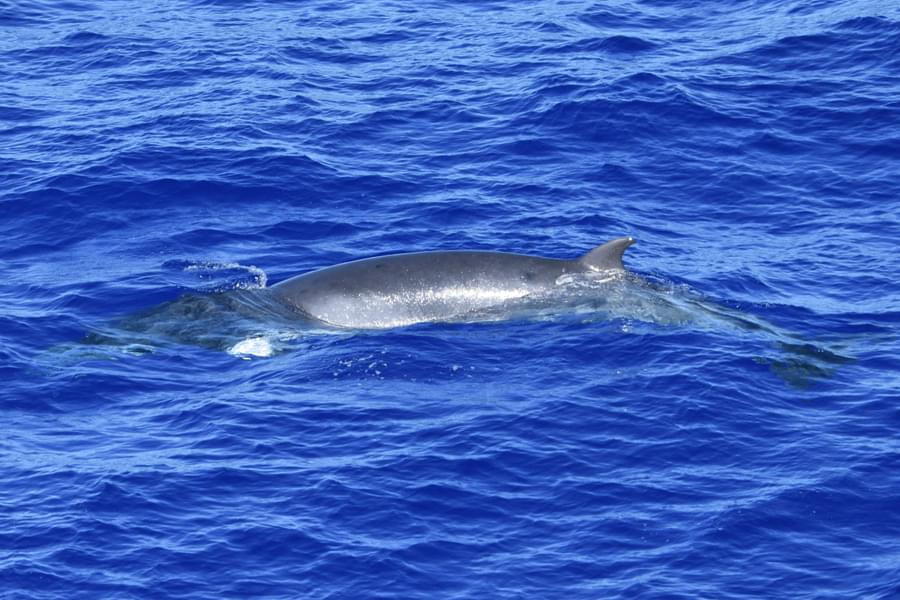"Minke whale!". I just made it over to the other side of the deck to see the curved back and dorsal fin of a minke whale rise again before disappearing beneath the waves. We were leading a deck-watch on a cruise ship sailing around the Hebrides, collecting data for ORCA, and we were hoping to see several minkes on our trip. What made this one extra special is that I had just had lunch with a wildlife-mad twelve-year-old and her parents, and it was the first whale she had ever seen.
Minke whales are not always easy to spot. They are small and unshowy, their blow is almost invisible, and the most we see of them is often just a discreet dark fin sinking quietly below the surface. They are notoriously 'sneaky', often surfacing just once before disappearing completely out of view!
But the minke whale is in fact the most abundant baleen (filter-feeding) whale found in UK waters, and Scotland has the highest density of minke whales anywhere in Europe, making it an important habitat for them. But they face a serious threat here from creel-fishing. “But wait a minute!” I hear you say. “I thought creel-fishing was better for the environment than other sorts of fishing?”. It certainly damages the seabed less than bottom trawling and the baskets (creels) placed on the seabed mainly trap the crabs and other crustaceans they are laid to catch, avoiding the huge bycatch of other species that is typical of some other fishing methods. But recent studies have shown that the ground lines connecting these creels create a serious risk of entanglement for whales in Scotland, and particularly minke whales. The problem is that while the creels sit on the seabed, the ground lines linking them float. As they arch upwards, they can become entangled in the fins, tails, and mouths of whales diving down for food.

Entanglement in creel ground lines is usually fatal for minke whales. Like all marine mammals, they need to swim to the surface to breathe, so becoming entangled often means suffocation. Even if they break free, the lines often cause injuries. In Scotland, entanglement is the biggest cause of non-natural deaths in baleen whales. It has been estimated that 30 minke whales are entangled every year in Scottish waters, and that over 80% of these die because of that entanglement. 83% of those entanglements are with ground lines used in creel fishing. One of the reasons is that both minke whales and creel fishers are attracted to the same places. They both prefer to stick fairly close to the coast, where it is not too deep, and the seafloor is sandy. Here is where herring and sand eels hang out (two of the minke whale’s favourite foods), as well as the prawns and crabs that the creel fishers are after. And both creel fishers and minke whales are most abundant there in summer months, increasing the risk of entanglements.
What if a solution could be found that would drastically reduce the chances of entanglement for minke whales but still be acceptable to fishers, who depend on their catches? Well, it appears that in Scotland at least, this might be possible.
An exciting new study has been conducted by Whale and Dolphin Conservation with funds from the Scottish Government’s Nature Restoration Fund. The project leaders worked with fishers to trial a different kind of ground line for creel fishing that does not float. Instead, it is just heavy enough to rest lightly on the seabed, making entanglement much less likely for whales. The study took place in an area that presents a high risk for entanglement, which includes the Sound of Raasay and the Inner Sound, between the Isle of Skye and the west coast of Scotland. The fishers reported no significant issues with the new sinking ground lines, compared to the old floating ones, and in fact found some advantages, as the sinking lines did not tangle as much in bad weather.

Sinking ground lines may not work as well everywhere: off the coast of Maine, they snag much more on the rocky seabed. But in many places in Scottish waters, using sinking lines is likely to make a huge difference to the survival rate of minke whales and other cetaceans. Sinking lines do cost about twice as much as the floating kind, but as conservation projects go, this represents an extremely low cost in return for a very high positive impact.
What can we learn from this success story? First, that high-quality data is crucial to show us where and how conservation efforts will make the most difference. And second, how important it is to work constructively and collaboratively with fishers and other users of the oceans’ resources. Whales and dolphins will flourish in our waters when we appreciate their value for our planet and work together to find solutions to the threats they face. One of the reasons I love working with ORCA is that this collaboration is central to its programmes, which include working with the shipping industry to reduce harm to whales through ship strike. And the data we collect while working on ships is crucial in shaping marine conservation policies, in Scotland and across the world.
- Joanna Page, ORCA Ocean Conservationist

The only way we can protect whales and dolphins is by understanding their distribution, and so monitoring is vital for effective conservation. Donate today to help ORCA continue to identify and study important whale hotspots around the world by visiting www.orca.org.uk/donate

